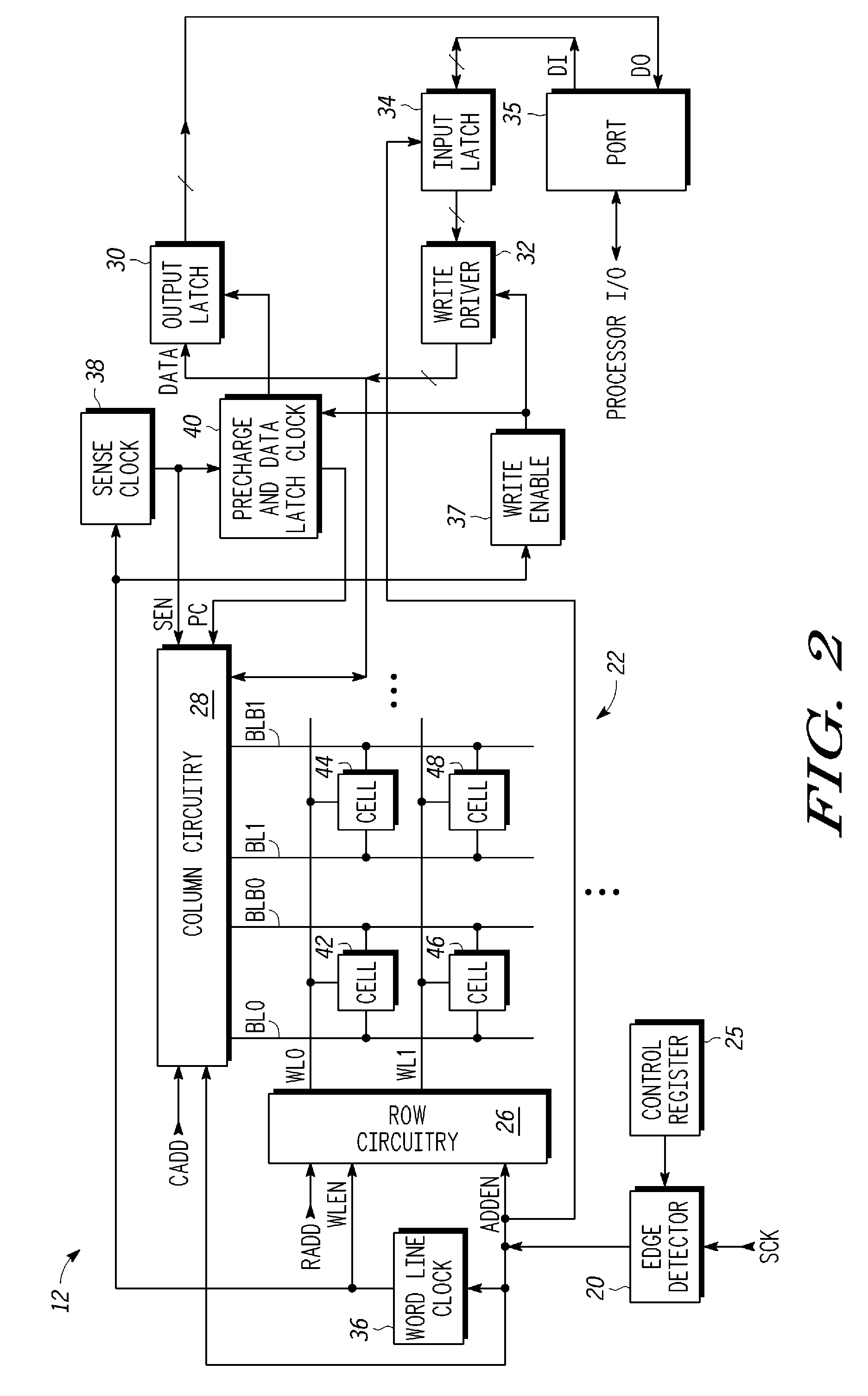Double-rate memory
a memory and double-rate technology, applied in the field of memory circuits, can solve the problems of requiring costly additional space for master clocks, significant extra power, and affecting the performance of memory circuits,
- Summary
- Abstract
- Description
- Claims
- Application Information
AI Technical Summary
Benefits of technology
Problems solved by technology
Method used
Image
Examples
Embodiment Construction
[0011]In one aspect a memory circuit uses both the rising edge and falling edge of a system clock to double the speed of operation of the memory. This is better understood by reference to the drawings and the following description.
[0012]Shown in FIG. 1 is a memory circuit 10 comprising a cache memory 12, a TAG memory 14, and an Address buffer 16. Cache memory 12 includes an edge detector 20 for receiving a clock signal. Similarly TAG memory 14 includes an edge detector 18 for receiving the clock signal. TAG memory 14 compares a portion of the address from address buffer 16 to its stored addresses to determine if there is a hit. Cache memory 12 responds to another part of the address and provides data from or writes data if it receives a hit signal from TAG memory 14. Both TAG memory 14 and cache memory 12 operate at the twice the frequency of the clock signal. Edge detectors 18 and 20 provide information as to whether the edge of the clock is a rising edge or a falling edge. An acce...
PUM
 Login to View More
Login to View More Abstract
Description
Claims
Application Information
 Login to View More
Login to View More - R&D
- Intellectual Property
- Life Sciences
- Materials
- Tech Scout
- Unparalleled Data Quality
- Higher Quality Content
- 60% Fewer Hallucinations
Browse by: Latest US Patents, China's latest patents, Technical Efficacy Thesaurus, Application Domain, Technology Topic, Popular Technical Reports.
© 2025 PatSnap. All rights reserved.Legal|Privacy policy|Modern Slavery Act Transparency Statement|Sitemap|About US| Contact US: help@patsnap.com



